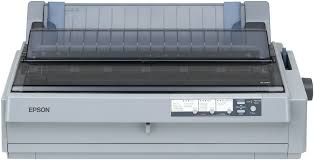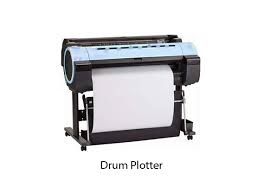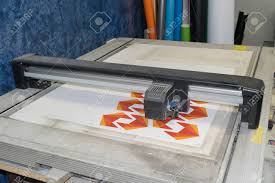OUTPUT DEVICES:
An output
device is an electromechanical device that accepts data from a computer
and translates them into a form suitable for use by outside world. Several output devices are available today. They
can be broadly classified as:
1. Monitors
2. Printers
3. Plotters
4. Screen image projector
5. Voice response system
Output devices generate computer output that can be
broadly classified into following two types:
1. Soft copy
output: It is not
produced on a paper or some material that can be touched and carried for a
being shown to others. They are temporary in nature. For example
contents displayed on a terminal screen or words spoken out by voice response
system.
2. Hard copy
output: It is produced
on a paper or some material that can be touched and carried for being shown
to others. They are permanent in
nature. For example output produced on paper by printers or plotters.
MONITORS:
o
They are the most popular output devices used today
for producing soft copy output.
o
They display
generated output on television like screen. Monitor is usually associated with
keyboard and together they form a video display terminal (VDT). Keyboard is
used for input to a computer and monitor is used to display the output from the
computer.
o
Two basic types
of monitors used today are Cathode Ray Tube
(CRT) and Liquid Crystal Display
(LCD) flat panel.
o
CRT monitors works
much like television screen and are used with non portable computer systems.
o
LCD flat panel monitors
are thinner, lighter and are used commonly with portable computer systems like
a notebook computers. They are also preferred because they occupy less table
space.
PRINTERS:
They are the most popular output devices used today
for producing hard copy output. Different types of printers are:
1.
Dot Matrix Printer:
o
They are character printers that print one
character at a time.
o
They form
characters and all kinds of images as patterns
of dots.
o
Dot Matrix
printer has a print head that moves
horizontally across the paper.
o
Print head
contains an array of pins that can be activated independent of each other to
extend and strike against an inked ribbon to form patterns of dots on the
paper.
o
To print a
character the printer activates the appropriate set of pins as the print head
moves horizontally.
o
For faster
printing many Dot Matrix printers print both ways while the print head
moves from left to right and while it moves from right to left on return. Such method is called bidirectional printing.
o
Since Dot Matrix
printers produce printed output as patterns of dots they can print any shape of
character that a program can describe and also have ability to print graphics
such as charts and graphs.
o
Dot Matrix
printers are impact printers because
they print by hammering the pins on the inked ribbon to leave ink impression on
paper. Due to impact printing Dot
Matrix printers are noisy as
compared to non impact printers.
o
Dot Matrix
printers are normally slow with printing speeds ranging from 30 to 600
characters per second.
o
They are cheap in
terms of both initial cost and cost of operation. Hence they are preferred by individuals and organizations
for generating printed outputs if the speed and quality of printing are not
important factors.
o
They are also
used for applications requiring multi copy
output such as shipping forms and invoices that rely on impact printing for
generating multiple copies.
2.
Inkjet Printers:
o
These are character
printers that form characters and all kinds of images by spraying small drops of ink on a paper.
o
The print head of
inkjet printer contains up to 64 tiny
nozzles that can be heated up selectively in a few microseconds by an
integrated circuit resistor.
o
When the resistor
heats up, the ink near it vaporizes and is ejected through the nozzle making a
dot on the paper placed in front of the print head.
o
To print a
character the printer selectively heats the appropriate set of nozzles as the
print head moves horizontally.
o
Inkjet printers
produce higher quality output than dot matrix printers because they form
characters by very tiny ink dots.
o
A high resolution
inkjet printer has as many as 64 nozzles within a height of 7 mm providing
print resolution of around 360 dots per inch.
o
Since inkjet
printers produce printed output as patterns of tiny dots they can print any shape
of characters, special characters, different sizes of print and graphics such
as charts and graphs.
o
It is known as non-impact because they print by
spraying ink on the paper and they are quieter in operation.
o
They cannot be used to produce multiple
copies of a document in a single printing.
o
A colour inkjet
printer usually comes with two ink - cartridges black and tri colour.
o
The tricolour
cartridge contains Red, Blue and Yellow colours in a package that can mix appropriate amount of
these colours with Black from the other cartridge to get any desired colour
with saturation. This makes it possible
to get multi coloured and photo quality output from inkjet printers.
o
These printers
are slower than dot matrix printers with a printing speed ranging from
4300 characters per second.
o
It is more
expensive than dot matrix printer and deferred if speed of printing is not
an important factor.
3. Laser Printers:
o Laser printers are page printers that print one page at a time.
o Main components of a laser printer are a laser beam source, multi sided mirror, a photoconductive drum and a toner.
o To print a page of output, the laser beam is focused on the electro statically charged drum by the spinning multi-sided mirror.
o The mirror focuses the laser beam on the surface of the drum in a manner to create the patterns of characters or images to be printed on the page.
o Since the drum is photoconductive, a difference in electric charge is created on those parts of the drums surface that are exposed to the laser beam. As a result the toner composed of oppositely charged ink particles, sticks to the drum in the places where the laser beam has charged the drums surface.
o The toner is fused permanently on the paper with heat and pressure to regenerate the printed output.
o The drum is then rotated and cleaned with rubber blade to remove the toner sticking to its surface to prepare the drum for the next page printing.
o Laser printers produce very high quality output because they form characters by very tiny particles.
o The most common laser printers have a resolution of 600 dpi (dots per inch) whereas some high end laser printers have a resolution of 1200 dpi. Due to their high resolution, these printers give excellent graphics art quality.
o Since laser printers produce printed output as patterns generated by the laser beam, they can print any shape of characters, special characters, different sizes of prints and also have the ability to print graphics such as charts and graphs.
o Laser printers are non impact printers and hence they are quieter in operation.
o They cannot be used to produce multiple copies of a document in a single printing.
o Although most laser printers can print in black colour only because they have a single toner drum arrangement, now even colour laser printers are available at affordable price.
o Colour laser printer, like colour inkjet printer, contains four colour toners, each with a drum of its own.
o They are faster in printing speed then other printers discussed earlier. Low speed laser printers can print 4 to 12 pages per minute. High speed laser printers are also available.
o Because of their better print quality and printing speed, laser printers are more expensive than other types of printers.
PLOTTERS:
They are an ideal output device for architects,
engineers, city planners and others who need to routinely generate high
precision, hard copy, graphic output of widely varying sizes. Two commonly used
types of plotters are drum plotter and flatbed plotter.
1.
Drum Plotter:
o
In a drum
plotter, the paper on which the design is to be made is placed over a drum that can rotate in both
clockwise and anticlockwise directions to produce vertical motion.
o
The mechanism
also consists of one or more pen holders
mounted perpendicular to the drums surface.
o
The pens clamped
in the holder can move left to right or right to left to produce horizontal
motion.
o
Under the
computer control the drum and pens move simultaneously to draw designs and
graphs on the sheet placed on the drum.
2. Flatbed Plotter:
o A flatbed plotter plots a design or graph on a sheet of paper spread and fixed over a rectangular flatbed table.
o In this type of plotter, normally the paper does not move, and the pen holding mechanism provides all types of motions necessary to draw complex designs and graphs.
o Under computer control the pens move in the required manner to draw designs and graphs on the sheet placed on the flatbed table. Provision is also there to mount more than one pen in the pen holding mechanism.
o The plot size is restricted by the area of the bed. Some may be as small as A4 size while some very large beds used in the design of cars, ships, aircrafts, buildings etc. can be up to 20 feet by 50 feet.






No comments:
Post a Comment